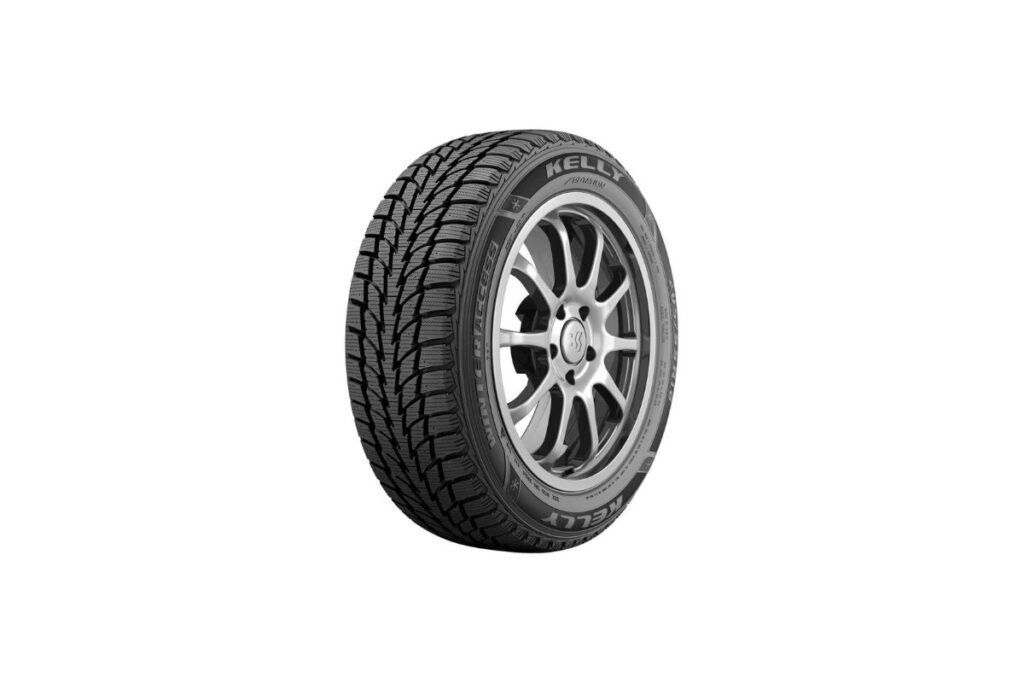Kelly Tires: When it comes to famous tire brands, most people think of Michelin, Goodyear, and Continental. But you might be surprised to learn that Kelly Tires, a lesser-known brand, has been around almost as long!
Kelly was founded in 1894 in Springfield, Ohio. They’ve been making rubber for over 125 years. In 1935, Goodyear acquired them, but Kelly still operated as a separate company. Today, Kelly is a lower-cost brand under Goodyear.
In summary, Kelly tires are an affordable alternative to premium Goodyears. They benefit from being associated with a respected tiremaker. I consider them a good choice for drivers who don’t want to spend a lot but still want good performance.
Now, let’s see how these tires actually perform on the streets.
Before we get to our impressions, I want to mention that Kelly recently released two new models called the Edge Sport and Edge Touring A/S. I haven’t tested them yet, but I’ll update you once I do. For now, let’s focus on the rest of the Kelly lineup.
About Kelly Tires
In 1894, Arthur Grant and Kelly Edwin started the Kelly tire company in Springfield, Ohio. They named it “the rubber wheel” because they made rubber carriage wheels. Arthur Grant received a US patent 554675 for their thick rubber tire inside a rim channel.
Kelly-Tire Company was one of the first tire companies in the country. Goodyear Tire bought it in 1935. Kelly-Tire is known for making thick rubber tires for early automobiles and carriages. They started making tires for other vehicles later. In 1994, The Kelly-Tire Company celebrated its 100th anniversary. It was the oldest tire manufacturer in America. Goodyear bought the company in the 1990s and moved its main offices to Akron, Ohio.
Kelly-Springfield now makes 54 different tires for cars, farm vehicles, and trucks. They sell them to independent dealers and large retail chains in the US. Kelly-Springfield is the biggest producer of custom brand tires in the country. They’re also one of the top makers of farm tires worldwide. People like that they can get custom-made tires from them.
Why Choose Kelly Tires?
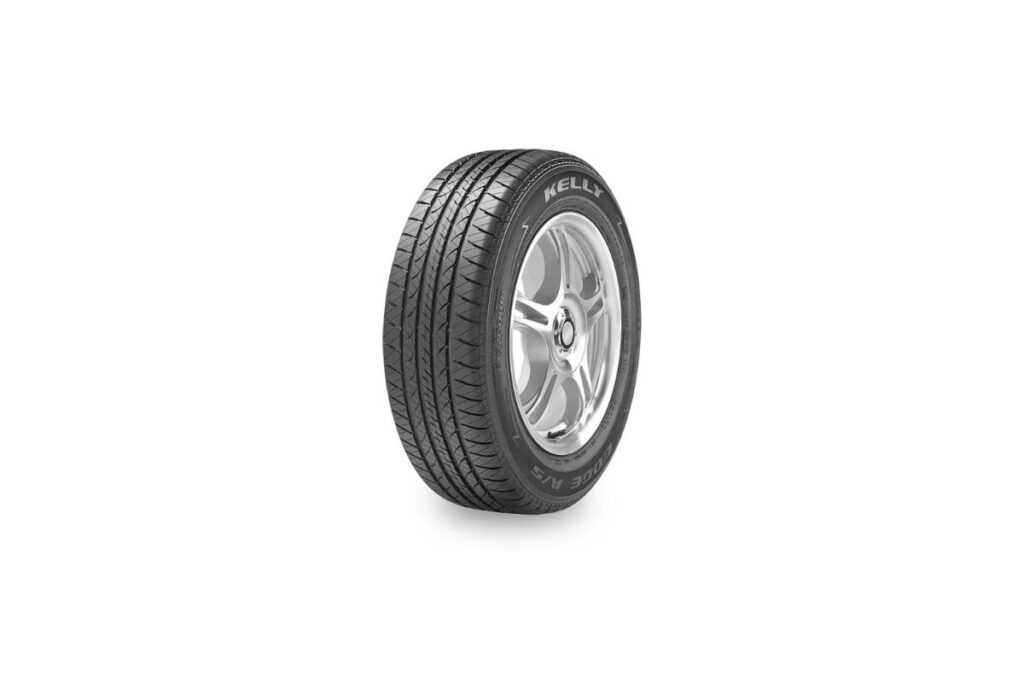
Kelly Tires is a sub-brand of Goodyear. They inherit the esteemed production pedigree of Goodyear. With over a century of tiremaking expertise between them, you can expect solidly-built rubber that meets drivers’ needs.
The main draw for many is Kelly’s wallet-friendly pricing. You still get exposure to Goodyear’s latest tech and materials, offered at far lower cost than the premium parent brand. For budget-focused drivers, that’s an appealing equation.
Durability emerges as another Kelly strength. Now I won’t pretend they match the top tier in longevity, but Kelly’s treadlife still impresses, especially for the price.
Certain all-terrain models boast 60,000+ mile warranties – very respectable distances considering cheaper tires often degrade quicker. If squeezing long mileage from your purchase matters, Kelly delivers.
So all in all, those needing complete performance may want to look elsewhere. But drivers prioritizing value have plenty to like with Kelly. Leveraging Goodyear’s pedigree at reasonable rates while providing pretty solid durability? That spells a compelling balance to me.
Who Makes Kelly Tires?
The Kelly-Springfield Tire Company used to make Kelly tires. In 1935, Goodyear bought the company and Kelly became part of Goodyear’s factory.
Now, Kelly is the top maker of over 54 types of tires for cars, trucks, and agricultural vehicles.
Kelly also makes the best custom tires in the country. They are also highly ranked in agricultural tires.
Where Are Kelly Tires Made?
Kelly tires were made in a factory in Springfield, Ohio in 1894. The brand then sold to Goodyear and moved to Akron, Ohio.
Most Popular Kelly Tires
Here are the best Kelly tires currently on the market:
#1. Edge A/S
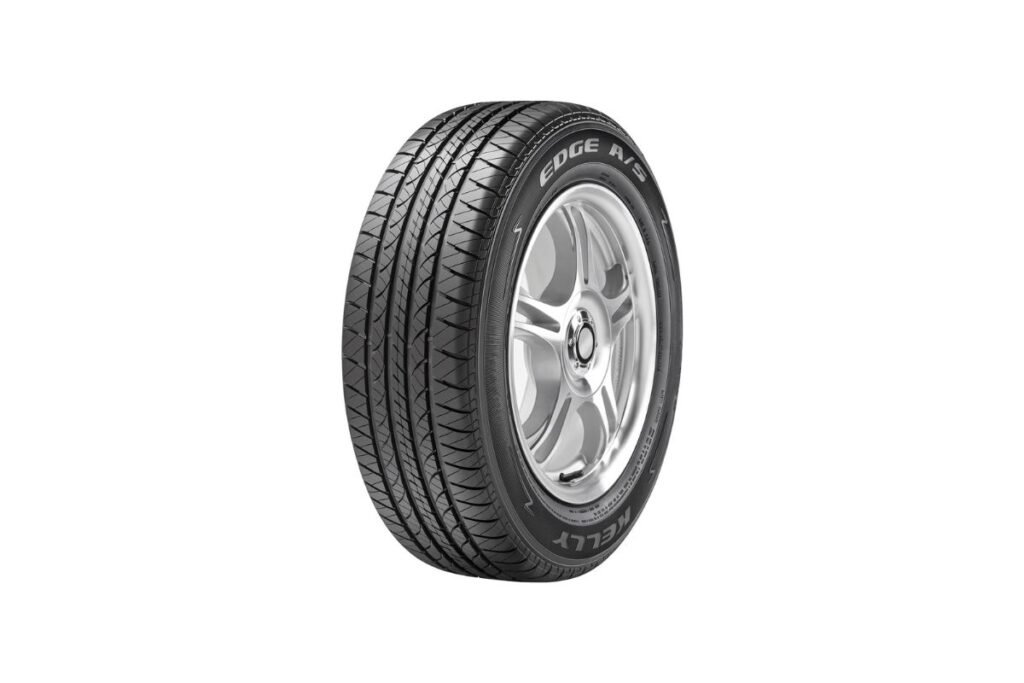
The bread-and-butter Kelly tire is called the Edge A/S. It’s an affordable all-season touring tire that focuses on lasting a long time and providing decent comfort for different vehicles.
The Edge A/S has a typical all-season tread compound and pattern that works well all year round, although it doesn’t have exceptional performance. It has grooves that help water move away from the tire and sipes that improve traction on wet and snowy roads. But there’s nothing really new or groundbreaking about it.
When you drive on the road, the Edge A/S performs like you would expect from an affordable tire. It’s fine for drivers who don’t demand too much, but it doesn’t handle corners very well. The tires struggle to grip the road, especially when it’s wet. They also perform decently in winter conditions, but they’re not impressive.
The tire’s refinement is hit-or-miss. It’s not too noisy, but the ride is firmer than you might expect. This is surprising because it’s supposed to be comfortable for touring.
If there’s something good about the tire besides its low cost, it’s that it handles well enough for a budget model and it can last for 55,000 miles. That’s actually better than other tires in its category.
To sum it up, the Edge A/S tire represents what Kelly is known for – it may not perform as well as more expensive brands, but it has satisfactory grip and impressive longevity considering its price.
Pros
- Decent performance in dry conditions
- Responsive
- Noise levels are solidly low
Cons
- It will struggle for traction on wet
- The comfort levels aren’t the best
2. Edge HP
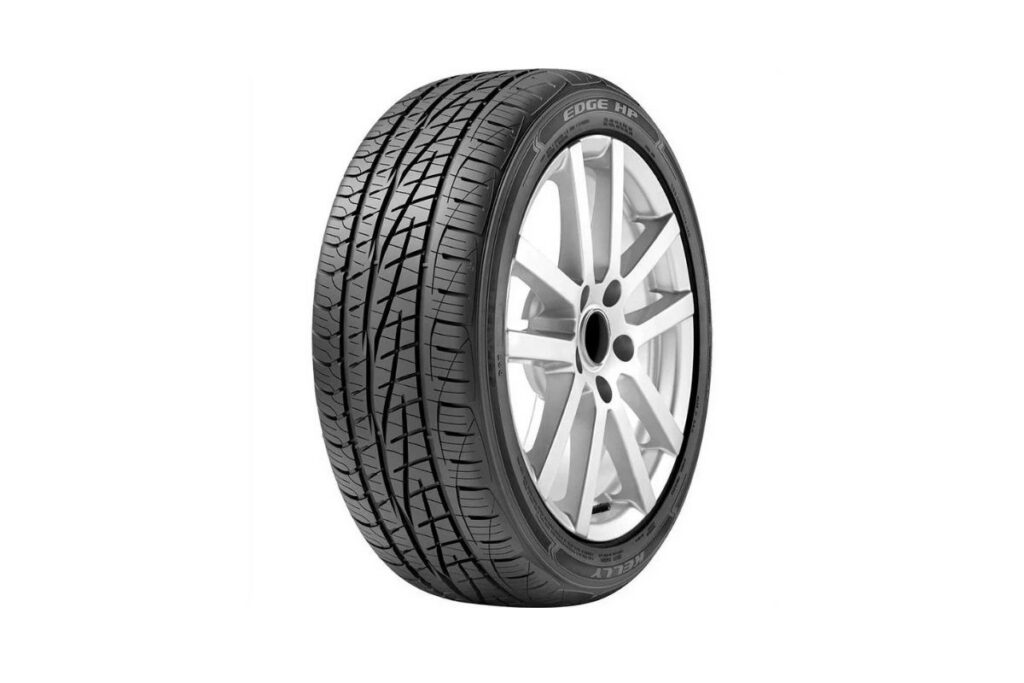
The Edge HP is an affordable ultra-high performance tire that performance-minded drivers should check out. It has an asymmetric tread that provides sportier responses in all seasons while still maintaining refinement.
The tire is made from an all-season compound and has a pattern that focuses on handling and water evacuation. It has a wide centered rib for stability and stiff shoulder blocks that resist deforming when going around corners. This tire has a dynamic personality.
When driving on the road, the Edge HP gives a taste of enthusiasm when pushed to the limit. It has good grip for moderately aggressive cornering on dry pavement, although it’s not as good as premium sport tires. However, it still provides fun for budget-focused enthusiasts.
The wet traction of the Edge HP is better than the Edge A/S. It provides reassuring traction in damp conditions and works fine on packed snow surfaces.
The ride quality is slightly impacted by the sportier build of the tire, but not excessively. The noise levels are lower than expected for a performance tire.
With its quick-reflex handling and reasonable road feedback, the Edge HP is a well-balanced choice for drivers who want engagement without spending too much money. It also comes with a 45,000 mile tread warranty, which is reasonable for its price range.
| Pros | Cons |
|---|---|
| Solid performance on dry and wet roads | The tire will struggle a bit on packed snow |
| Usable on unpacked snow | Lacks just a bit more feedback |
| Decent treadwear warranty |
#3. Edge HT
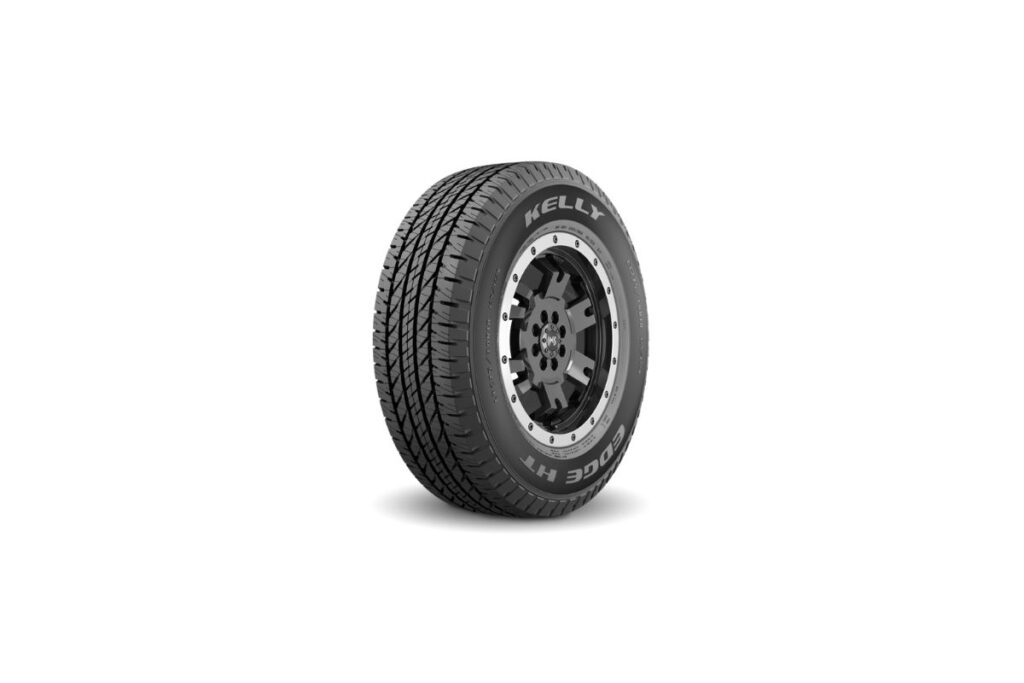
The Edge HT is a good option for SUV and light truck owners who want a comfortable ride on the highway.
The tire has a reliable tread compound that works well in different conditions. It has grooves and sipes to handle wet and snowy roads. The center rib makes the tire stable for big vehicles. It’s not fancy, but it does the job.
On dry pavement, the Edge HT has strong grip and traction for a smooth drive. It’s not as good on wet roads, with less traction in corners, but it resists hydroplaning. It also performs decently on unpacked snow, but slides more on packed surfaces.
The tire is great for highway driving. It smooths out bumps and keeps the cabin quiet and free from vibrations. It provides a comfortable and quiet ride.
However, don’t expect great handling or steering feedback. The tire is safe and controlled, but not very responsive.
Kelly offers an impressive 60,000 mile warranty for the Edge HT. The tire is also strong enough for heavy loads in light trucks.
Overall, the Edge HT is a good all-purpose tire for SUV and light truck drivers who prioritize comfort over performance. It handles the basics well and is affordable.
| Pros | Cons |
|---|---|
| 60,000-mile treadwear warranty | Performance on packed snow is a bit behind its rivals |
| Very good performance on dry roads | It may struggle for grip and traction on damp roads |
| Decent on unpacked snow and slush |
#4. Edge A/T
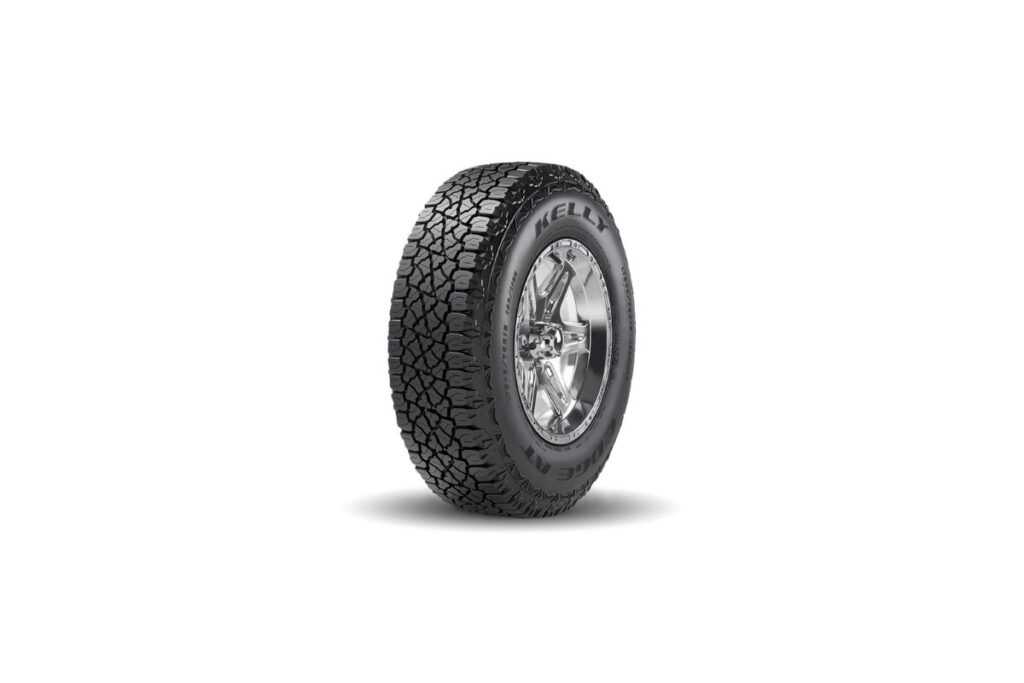
The Edge A/T is a tire that fits in Kelly’s lineup. It is affordable and can be used on both roads and off-road. It is designed for SUV and pickup owners.
The tire has rubber and tread that provide good traction in different conditions. It also has a more aggressive pattern and lugs that make it capable on light trails. While it is not a rugged off-roader, it can handle occasional adventures.
On paved roads, the Edge A/T is safe to drive but not very exciting. It is best suited for casual driving. It has good grip under normal loads, but it loses grip when pushed hard in corners. Wet traction is not very good, and it can feel slippery and snappy. However, it does resist hydroplaning, which helps with stability.
When driven off-road on dirt and light mud, the Edge A/T performs well. However, it does not have advanced self-cleaning technology, so mud buildup can be a problem. It is better suited for gravel and forest trails than for rock crawling in Moab.
In terms of refinement, the Edge A/T is average in terms of road noise and ride comfort. It is not exceptional, but it is not disruptive either. There are some tradeoffs to consider.
The tire is also responsive enough for all-terrain driving without feeling vague or sloppy. It is suitable for road trips, but it does not offer precise handling.
With a 50,000 mile warranty, the Edge A/T is surprisingly durable considering its price. Shoppers who want occasional off-road fun at a lower cost should definitely consider this tire.
| Pros | Cons |
|---|---|
| Solid off-road performance | Traction on damp roads is a bit behind its rivals |
| Good grip and traction in dry conditions | The tire will struggle a bit on packed snow |
| Decent snow performance |
#5. Safari TSR
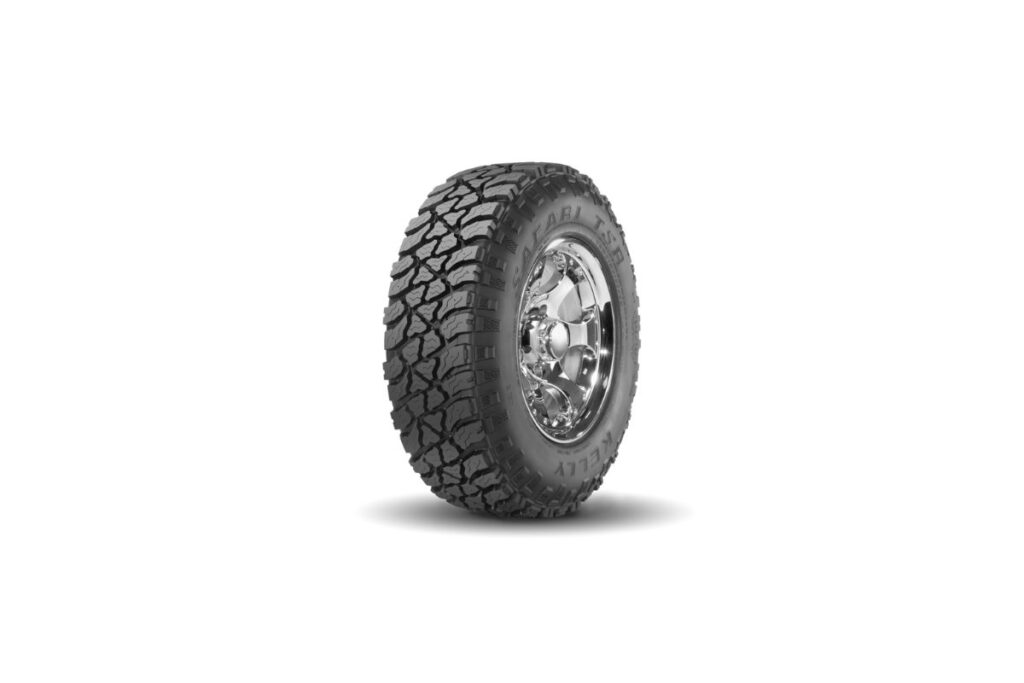
The Safari TSR is a more aggressive all-terrain tire that is designed for occasional off-road use. It performs well on trails and is serious about its performance.
The tire has a non-symmetric tread pattern made from an all-season compound, which gives it good traction on different surfaces. It also has self-cleaning technology and staggered shoulder lugs that provide excellent traction when crawling over rocks. Additionally, the Safari TSR can be fitted with studs for better grip on snow.
On the street, the Safari TSR offers reliable traction for normal driving, despite its rugged appearance. It has good grip on dry roads and performs well when cruising on highways and towing. The tread pattern actively prevents hydroplaning. However, it doesn’t perform as well on damp surfaces as its competitors. It can be improved with the addition of cold weather studs for better performance in snow.
Off-road, the Safari TSR really shines. It performs noticeably better than Kelly’s road-focused options when driving through dirt, mud, and smaller rocks. The self-cleaning technology helps keep mud from building up during long trips. While it’s not a dedicated rock crawler, it is more adventurous than other tires.
Even on the road, the Safari TSR offers better refinement than expected for an all-terrain tire. It provides good isolation from large bumps and reduces vibrations. The tread noise is also lower than anticipated. It may not be the quietest tire for highway driving, but it offers a comfortable ride.
The Safari TSR has reasonably responsive steering, making it handle like a typical all-terrain tire. It is a great value upgrade for weekend warriors and desert enthusiasts who don’t need hardcore equipment. It is also durable, although it would be helpful if Kelly provided a mileage warranty for this tire.
| Pros | Cons |
|---|---|
| Self-cleaning pattern maintains off-road performance | Wet traction slightly lags behind competitors |
| On-road performance satisfies most users | Snow traction without studs is subpar |
| Offers decent comfort and noise levels |
#6. Edge MT
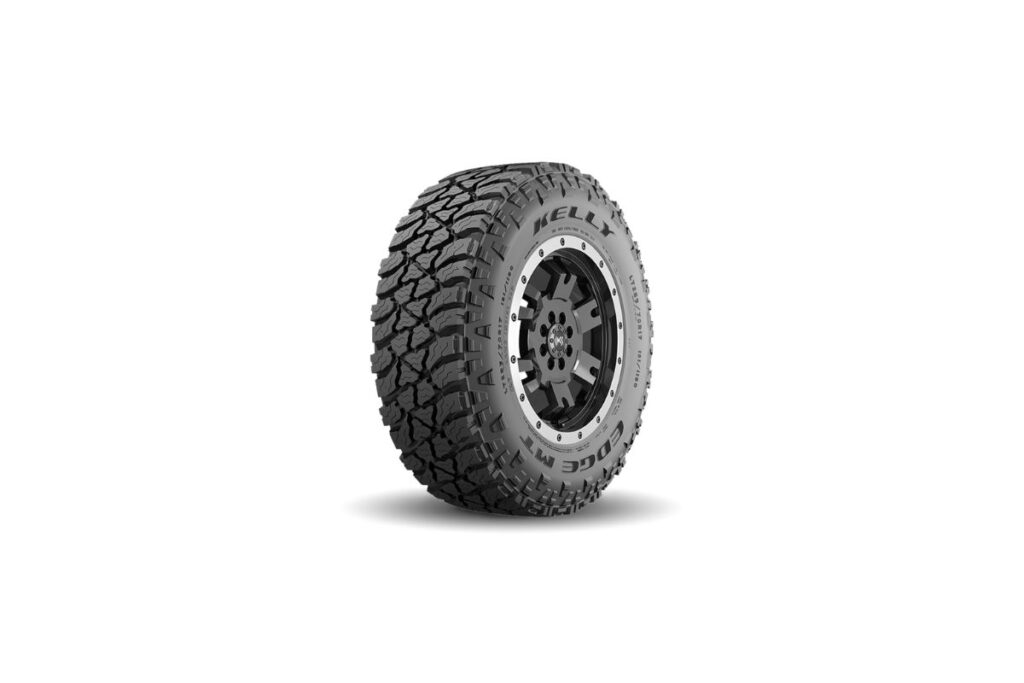
Kelly’s lineup is completed by the Edge MT, which offers aggressive mud-terrain capabilities at an affordable price. This tire is eager to tackle challenging trails.
One noticeable feature is the optional studs, which are rarely found on mud tires. These studs provide extra traction on ice and hard-packed surfaces. Additionally, the tire has an open-grooved pattern that helps it power through thick mud. It also incorporates self-cleaning technology to prevent clogging. Furthermore, the large lugs on the tire improve traction on rocky terrain.
Surprisingly, the Edge MT also performs well on roads, thanks to its multi-directional sipes. It maintains safe and stable grip in dry conditions. However, it does not perform as well in wet conditions compared to tires designed for street use.
Off-road is where the Edge MT truly excels. It offers exceptional grip in deep mud and soft dirt, effortlessly handling tough terrain. Its reliable cleaning action helps maintain traction. While it may not be the best tire for extreme rock crawling, it still flexes and grips reasonably well in rock gardens and ruts.
However, there are some drawbacks to consider. The ride quality of the Edge MT is harsh and bouncy, lacking smoothness over bumps. The tire also produces noticeable noise, although it is not as bothersome as expected.
When it comes to handling, the Edge MT exhibits vague responses to driver input, making precise maneuvers challenging. However, this characteristic aids in slow articulation off-road. Additionally, this tire does not come with a mileage warranty, which is typical for this category.
For budget-conscious shoppers seeking aggressive trail traction, the Kelly Edge MT is a great choice. It offers studdable capabilities and performs well in mud, all at an affordable price.
| Pros | Cons |
|---|---|
| Studdable | Wet performance slightly lags behind rivals |
| Solid off-road performance | Ride quality is somewhat firm |
| Stable and planted in dry conditions |
Kelly Tires Buying Guide
Why should you like Kelly tires? What makes these tires stand out from the rest? Are there areas where Kelly tires could have improved? Any deal-breaker shortcomings? This section has all the answers.
Why Should You Buy Kelly Tires?
Given their pedigree, Kelly punches above their weight class in several areas that should put them on shopping lists:
First and foremost – wallet-friendly pricing. Despite Goodyear lineage, Kellys retail as an affordable subsidiary – you’ll net noticeable savings versus big brands. Now you sacrifice some performance, but these still deliver safety for less. Outstanding price-per-performance value.
Next up is solid real-world performance. To be crystal clear, Kellys won’t match category leaders. However, they largely provide expected quality given cost. Think of it as getting what you pay for, which for many drivers spells decent enough performance.
Finally, Kelly impresses with a wide range spanning countless vehicle fits. Now the model portfolio isn’t huge, but tire types and sizing options cover lots of ground. When shopping, you’ll likely discover good Kelly candidates for nearly anything.
To summarize – if upfront value matters most, Kelly deserves a spot on your retailer shortlist. Are absolute best-in-class metrics the priority regardless of price? Then premium tires remain the top choice. But shoppers wanting very good performance paired with easy affordability should absolutely test drive Kelly.
Why Should You NOT Buy Kelly Tires?
Kelly’s value equation is impressive, but it’s important to be realistic – no tire is perfect. After testing, I found some limitations that shoppers should be aware of:
First, Kelly’s wet traction is a weakness. When the pavement is damp, the tread sipes and rubber compounds don’t perform as well as competitors. It’s not dangerously bad, but it’s easier to lose control compared to more expensive brands.
Second, Kelly only offers all-season tires. They don’t have specific options for summer or winter driving. This is not a big issue in dry climates, but it means less grip on snow and ice.
Finally, the overall refinement of Kelly tires is not as good as premium brands. For example, the touring-focused Edge A/S model is surprisingly firm and noisy for a comfort-oriented tire. The build quality is average, but I’ve experienced better refinement with other brands.
To summarize, Kelly tires offer good value, but they sacrifice performance in wet conditions, winter driving, and ride quality. If you’re looking for a tire that provides luxury-car responsiveness, you should consider other options. However, if you’re a savvy shopper who is willing to compromise for affordable prices, Kelly tires should still be on your list. Remember, you get what you pay for!
Vehicles Compatible with Kelly Tires
- Lexus TL, CL
- Chevrolet Cobalt, Malibu, Impala, Sonic LTZ, BMW 135i, and 330i
- Grand Caravan, Nitro, and a Dodge Neon
- Ford Fusion, Focus, Mustang, and Taurus
- Civic, CR-V, Insight, and Accord from Honda
- Rondo, Optima, and Rio
- Mazda3, Mazda6, and 929
- Versa, Leaf, Cube, Nissan Altima, Maxima, Pontiac Vibe, and Grand Prix.
- Subaru Outback, Legacy, and Impreza WRX
- Toyota Camry, RAV4, Avalon, Solara, and Sienna Suzuki SX4
- Volkswagen Touareg, Passat, and Jetta
FAQs
Yep – Kelly is actually one of the oldest US tire brands, founded way back in 1894. But today it exists as a value-focused sub-brand under the Goodyear umbrella. Kelly takes advantage of Goodyear’s expertise and tech while concentrating on affordability.
You bet. Kelly operates factories in Akron, Ohio keeping production domestic.
Now I know what you really want to know – are these puppies noisy?? Tread noise depends somewhat on design – Kelly’s highway and street focused tires stay reasonably quiet thanks to smoothing tech. You can cruise smooth on most surfaces. The all-terrains won’t match a comfortable touring model, but Kelly does tune them to minimize roar through innovations like asymmetrical spike blocks. Overall they rate average.
Impressively durable in my experience. Most Kelly tires average from 45,000 to 80,000 miles based on type and driver habits. They focus on longevity for the money.
Yes, value remains Kelly’s main mission. Figure around $300 give or take for a set – way cheaper than big brand premium offerings. An accessible price for drivers wanting decent performance without draining their wallets.
Conclusion
On spec sheets, Kelly presents a compelling value proposition: a lot of tire for not a lot of cash. Shoppers know that combo of impressive performance and affordability is rare.
Out on real roads, the story holds up fairly well. In my experience behind the wheel, Kelly rubber ultimately delivers a solid if unspectacular driving experience. These won’t wow anyone seeking apex-carving precision, but given the budget pricing, Kellys largely get the job done.
Kelly tires have some limitations in grip and handling compared to top brands. This is a fact. However, overall, Kelly tires offer good real-world performance. They are worth considering for many drivers. If I were advising a friend or family member, I would confidently recommend Kelly Tires to people who want good value for their money.
Are they perfect? No – compromises are made to keep their price reasonable. But, for an affordable price, Kelly does provide decent performance that should satisfy casual and non-aggressive drivers. The value definitely lives up to expectations here.

